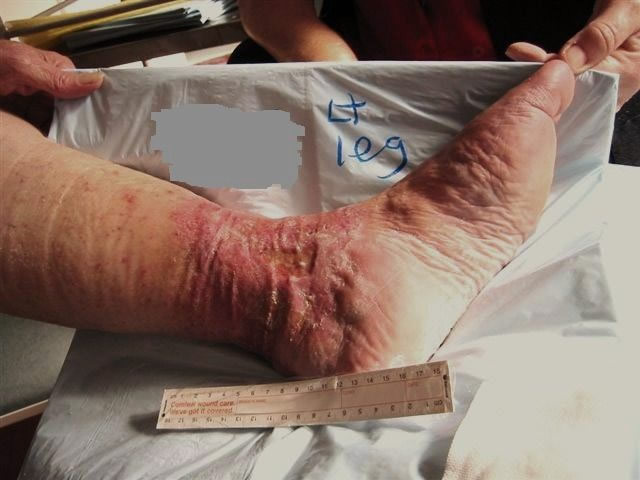8C: Applying Evidence
How do we put evidence into practice? At an organisational level, research has identified a number of strategies which have been effective in achieving the transfer of evidence into practice, including:
- ‘Champions’ to become key resource personnel and provide support
- Educational materials
- Hands-on skills development workshops
- Clinical decision making support systems and tools
- Reminder systems.
This section provides an example of implementing evidence based practice at the level of the individual clinician, incorporating the three aspects of evidence based practice (as described in 8A: What is EBP?) when planning care:
- best available research evidence
- clinical expertise and context
- client preferences.
Example scenario
The following scenario describes the process of applying evidence and starts with a clinical problem.
Clinical problem
A 75 year old client has a leg ulcer just above the ankle.
IMAGE - M8 01 Ulcer located on ankleShe has a medical history of osteoarthritis, varicose veins, hypertension, chronic obstructive airways disease and is a smoker. The leg ulcer has been present for 13 months and she has suffered with many leg ulcers in the past.
Implementing evidence based practice
How would you commence evidence based practice for this client? Essentially, you would follow these steps:
| Step | Details |
| 1. Search the best available evidence | Find evidence based guidelines available based on recent evidence such as RCN, The management of patients with venous leg ulcers. 2006; RNAO, Assessment and Management of Venous Leg Ulcers. 2004; and Robson et al. Guidelines for venous ulcers. Wound Rep Regen. 2006. 14: 649-62.
The guidelines report strong evidence to recommend:
After healing, the use of compression hosiery helps prevent recurrence (as outlined in 3C: Prevention). |
| 2. Consider the available clinical expertise and context |
|
| 3. Consider the client’s preferences |
|
| 4. Make a final decision |
IMAGE - M8 02 Ulcer healing |




